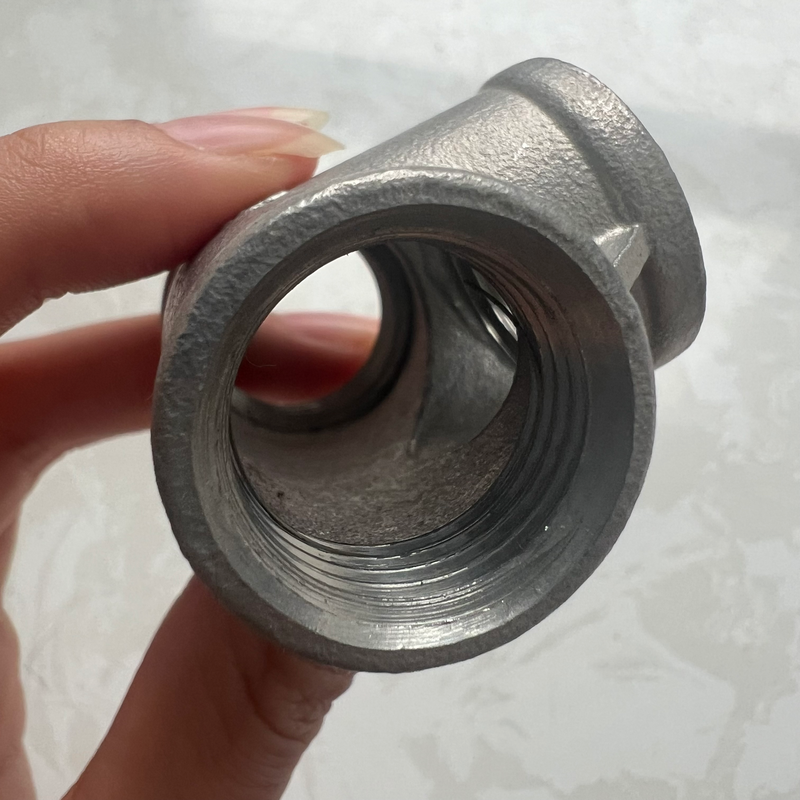Pipe fittings, such as pipe elbows, cross, and tee pipes, are crucial in piping systems and enable directional changes, branch connections, and flow distribution. In this text, we will discuss each fitting together.
1. Pipe Elbow
The pipe elbow is a commonly used pipe fitting to change the direction of a pipe. It typically features an angled design, allowing the pipeline to navigate around obstacles or change its route. 180, 45, or 90-degree elbow pipes fulfill the needs of most systems.
-
 90° Elbow
90° Elbow
90-degree elbow pipe creates a right-angle turn in the piping system.
90-degree elbow pipe is wide in those that require a sharp turn system.
The flow direction of the 90-degree elbow pipe provides clean and sharpness.
-
45° Elbow
Used for gentle change of direction.
Used for pressure descent where the system does not need a sharp turn.
45-degree pipe elbow decreases the turbulence and pressure loss compared with 90-elbow pipe.
-
180° Elbow:
180-degree pipe elbow allows for a complete turn in piping, forming a U-turn in the pipeline.
Suitable for where limited space needs compact layout applications.
There is no need to add extra pipe to achieve an effect available flow direction.
-
Types
Long Radius Elbow: Has a larger radius, reducing pressure loss and wear.
Short Radius Elbow: Compact design for tight spaces but causes more turbulence.
-
Applications
HVAC systems for duct routing.
Oil, gas, and water pipelines.
Chemical and processing plants.
-
Benefits
An elbow pipe is efficient in changing direction and does not affect systemic flow integrity.
Durable, even in high-pressure and corrosion applications.
The elbow pipe is the base to ensure the flexibility and function of any pipeline infrastructure.
Stainless steel elbows in food processing due to their high corrosion resistance.
2. Pipe Tee
A pipe tee is a T-shaped fitting that allows branch connections in a piping system. It has one inlet and two outlets at a 90° angle to the main line (or vice versa).
-
 Equal Tee
Equal Tee
Equal tee means three outlets have the same diameter, also known as the straight tee.
The equal tee maintains uniform flowing pressure and velocity and is easy to install in the same-diameter pipes.
-
Reducing Tee
Also known as unequal tee, one branch has a smaller diameter than the main line.
Used in the different pipe sizes to transition.
Convenient to rate control and pressure regulation.
-
Applications
Diverts or combines fluid flow.
Common in plumbing, irrigation, and industrial piping networks.
Used in systems requiring branching to secondary lines.
3. Pipe Cross
A pipe cross is a fitting with four openings arranged at 90° angles, forming a "+" shape. It allows for the connection of four pipes.
-
Equal Cross
All four branches are of the same diameter.
-
Reducing Cross
One or more branches have a smaller diameter than the main line.
-
Applications
 It is often used in fire protection systems where must be water flow distributed in multiple directions.
It is often used in fire protection systems where must be water flow distributed in multiple directions.
Cross pipe is in industrial processes involving complex piping layouts.
It cycles the cooling water and steam in many lines.
Cross pipe distributes water in multiple irrigation areas.
4. Materials
-
Stainless Steel
Stainless steel pipe fittings have high corrosion resistance. Ideal for food, beverage, and chemical industries.
Stainless steel pipe fittings maintain longer use even in extreme temperatures and pressures.
304 and 316 stainless steel is suitable for most industries.
The smooth surface of stainless steel fittings prevents impurities accumulation and hygiene and is easy to clean.
-
Black Steel
Black steel pipe fittings have strength, durability, and cost-effectiveness and are widespread in various industries.
-
 Galvanized Steel
Galvanized Steel
Galvanized steel fittings enhance corrosion resistance for outdoor and moisture applications and extend use life.
Galvanized steel pipe and elbow have benign mechanical strength and are stable even in a high-temperature environment.
Galvanized steel fittings have lower maintenance costs, wide applications, and economics.
-
Copper
Excellent thermal conductivity; often used in plumbing and HVAC systems.
5. Advantages of Using These Fittings
 Elbow pipe, pipe tee, and cross pipe fitting are versatile and applicable across multiple industries.
Elbow pipe, pipe tee, and cross pipe fitting are versatile and applicable across multiple industries.
Efficiency simplifies complex piping layouts.
Durable, high-quality materials extend the system's lifespan.
Ease of Installation, threaded, welded, or push-fit options ensure quick assembly.
Flexible, change the direction.
Elbow pipe allows piping systems to fit into tight spaces without needing excessive material. Pipe tees and cross pipes reduce the need for additional connections by consolidating branching or flow merging into a single fitting.
Elbow pipe, pipe tee, and cross pipe fitting are essential for constructing efficient, safe, and adaptable piping systems. They can adjust direction, manage brach, and connect to many pipes, so these fittings are crucial for modern industry, commercial, and home applications. Suitable pipe fittings ensure long-term properties and save costs.
6. Conclusion
Elbows, tees, and cross pipes are efficient and functional, integral to piping systems. Different types, angles, and materials ensure compatibility with applications from industrial systems to residential plumbing. Selecting the applicable fitting ensures smooth operation and enhances the system's longevity and safety. Choose us, so don't worry your project may cause problems. The staff of SANVO and the factory provide the best pre and after-sales service and high-quality products.





